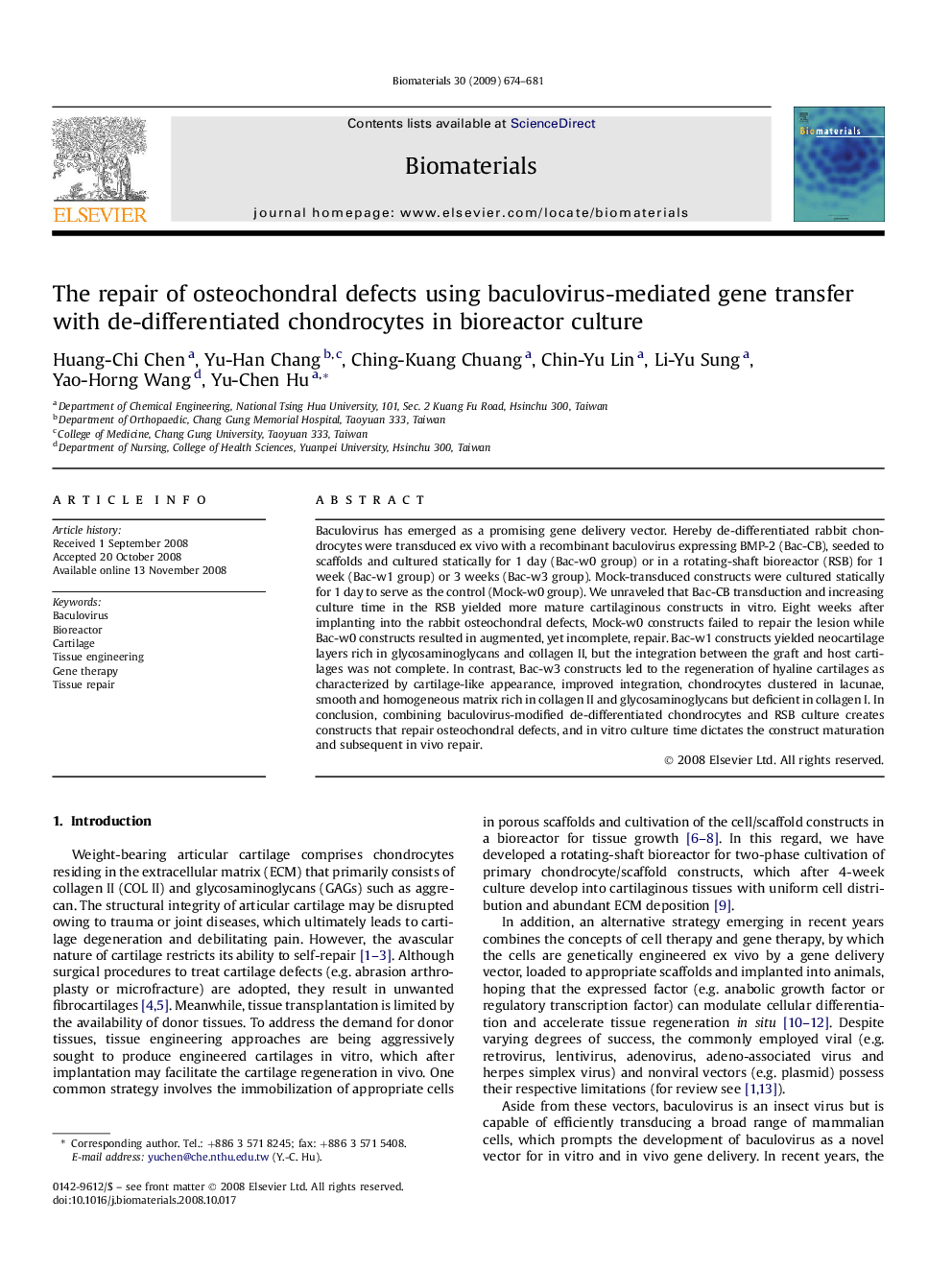| Article ID | Journal | Published Year | Pages | File Type |
|---|---|---|---|---|
| 10843 | Biomaterials | 2009 | 8 Pages |
Baculovirus has emerged as a promising gene delivery vector. Hereby de-differentiated rabbit chondrocytes were transduced ex vivo with a recombinant baculovirus expressing BMP-2 (Bac-CB), seeded to scaffolds and cultured statically for 1 day (Bac-w0 group) or in a rotating-shaft bioreactor (RSB) for 1 week (Bac-w1 group) or 3 weeks (Bac-w3 group). Mock-transduced constructs were cultured statically for 1 day to serve as the control (Mock-w0 group). We unraveled that Bac-CB transduction and increasing culture time in the RSB yielded more mature cartilaginous constructs in vitro. Eight weeks after implanting into the rabbit osteochondral defects, Mock-w0 constructs failed to repair the lesion while Bac-w0 constructs resulted in augmented, yet incomplete, repair. Bac-w1 constructs yielded neocartilage layers rich in glycosaminoglycans and collagen II, but the integration between the graft and host cartilages was not complete. In contrast, Bac-w3 constructs led to the regeneration of hyaline cartilages as characterized by cartilage-like appearance, improved integration, chondrocytes clustered in lacunae, smooth and homogeneous matrix rich in collagen II and glycosaminoglycans but deficient in collagen I. In conclusion, combining baculovirus-modified de-differentiated chondrocytes and RSB culture creates constructs that repair osteochondral defects, and in vitro culture time dictates the construct maturation and subsequent in vivo repair.
